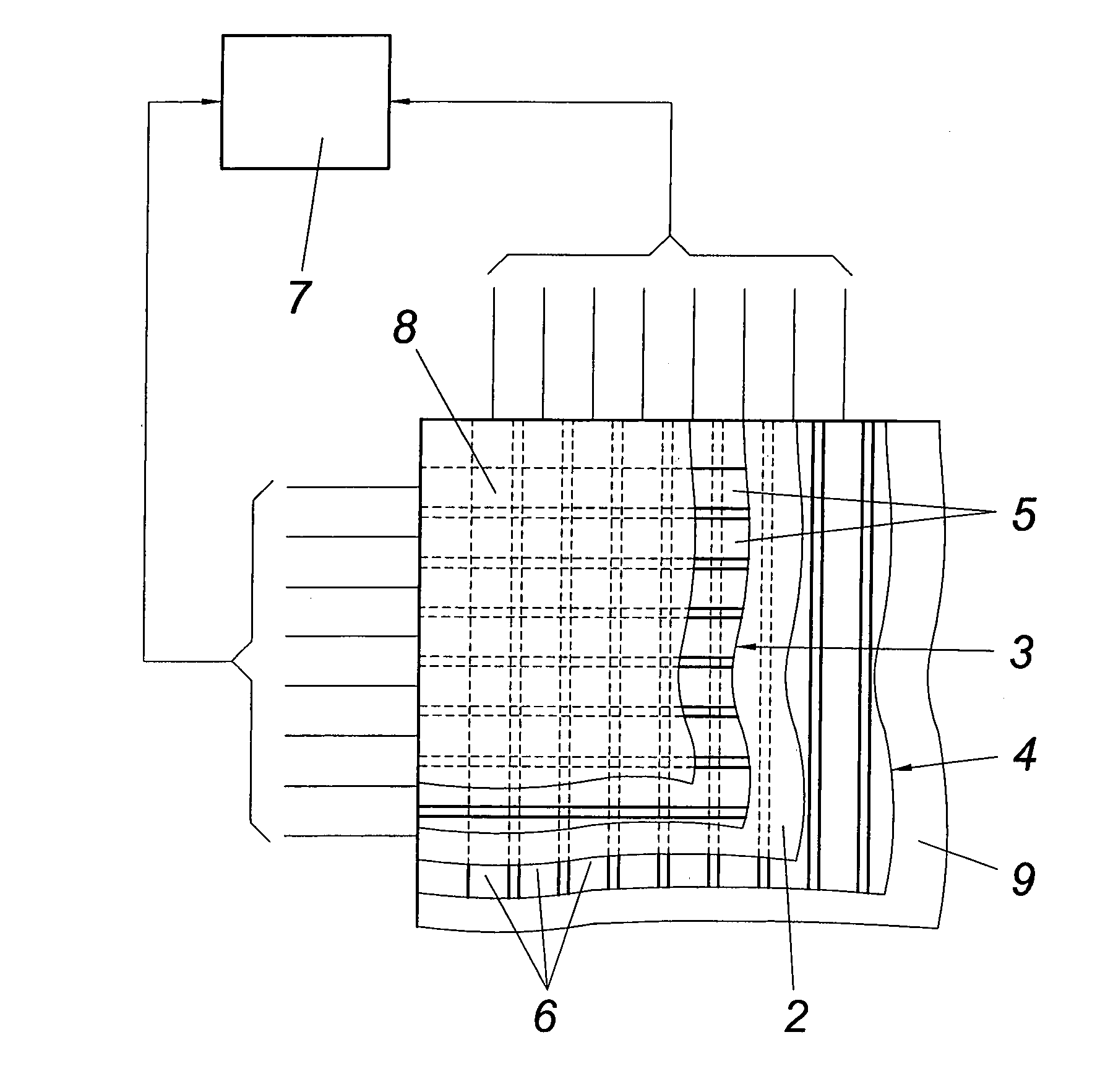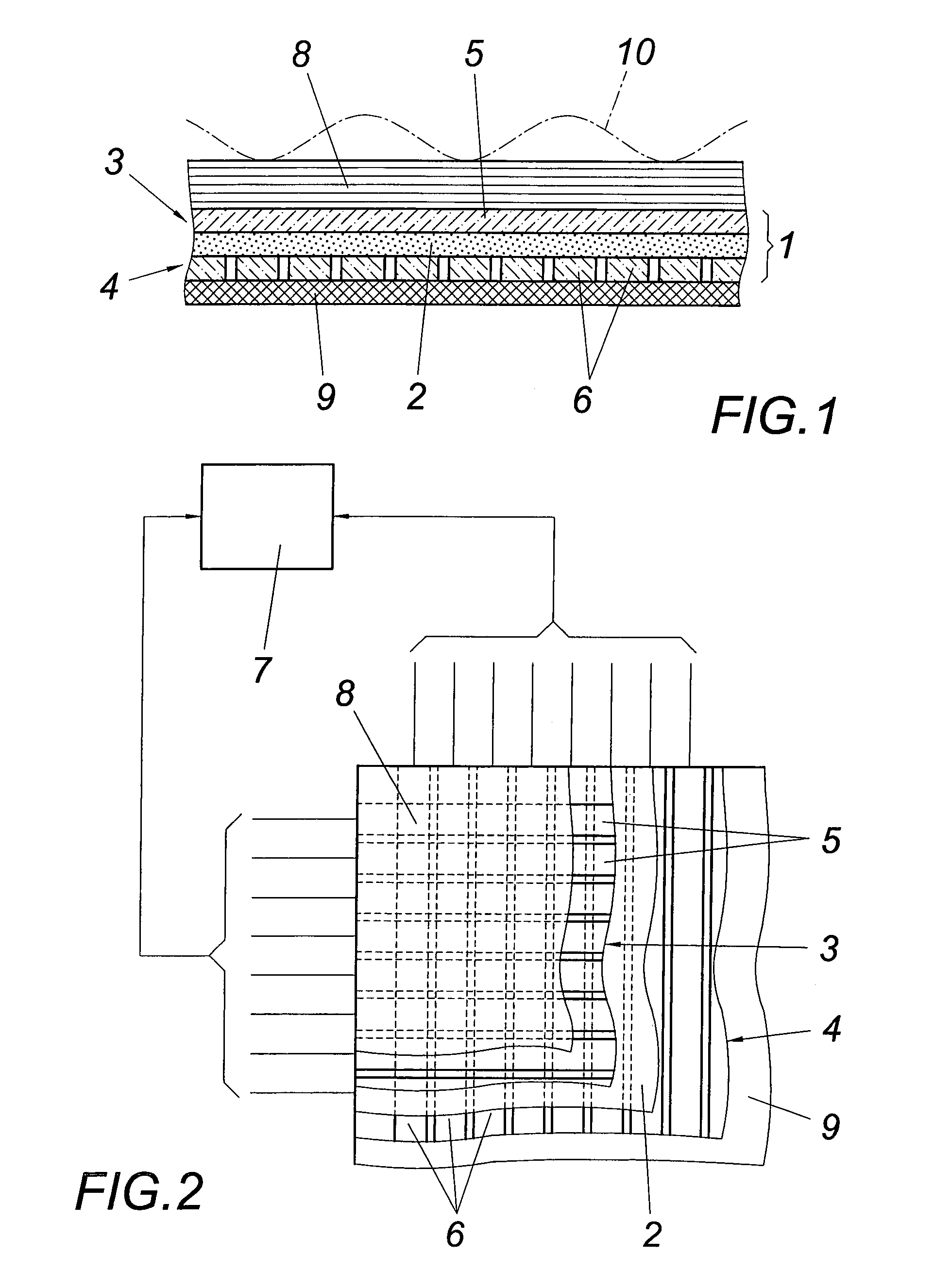Fingerprinting device
a technology of fingerprinting and printing plate, which is applied in the field of fingerprinting plate, can solve problems such as design cos
- Summary
- Abstract
- Description
- Claims
- Application Information
AI Technical Summary
Benefits of technology
Problems solved by technology
Method used
Image
Examples
Embodiment Construction
[0014]According to the illustrated embodiment, the fingerprinting device has a layer 1 of light-sensitive elements in the form of a translucent, photoactive layer 2 consisting, for example, of two molecular organic components, namely a conjugated polymer component as the electron donor and a fullerene component as the electron acceptor. This photoactive layer is provided between electrode layers 3, 4 consisting of intersecting strip conductors 5, 6 connected to an evaluation circuit 7, as indicated in FIG. 2. The strip conductors 5 of the electrode layer 3, acting as a hole-collecting cathode, advantageously consist of an indium / tin oxide (ITO), whereas the electrode layer 4 has aluminum strip conductors as the electron-collecting electrode. Polymer layers can additionally be provided between these electrode layers 3 and 4 and the photoactive layer 2 for improving the hole or electron transfer. The photoactive layer 2 with the electrode layers 3, 4 is attached to a translucent top l...
PUM
 Login to View More
Login to View More Abstract
Description
Claims
Application Information
 Login to View More
Login to View More - R&D
- Intellectual Property
- Life Sciences
- Materials
- Tech Scout
- Unparalleled Data Quality
- Higher Quality Content
- 60% Fewer Hallucinations
Browse by: Latest US Patents, China's latest patents, Technical Efficacy Thesaurus, Application Domain, Technology Topic, Popular Technical Reports.
© 2025 PatSnap. All rights reserved.Legal|Privacy policy|Modern Slavery Act Transparency Statement|Sitemap|About US| Contact US: help@patsnap.com


